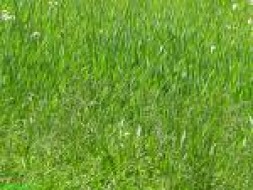How To Promote A Healthy Lawn

When soils and plants are healthy, plants naturally resist disease and pests -- allowing gardeners and lawnowners to reduce (or avoid) the use of pesticides and quick-release fertilizers. Healthy lawn and garden practices often save homeowners time and effort in the long-run and promote a beautiful landscape.
Healthy lawn and garden principles were developed by professionals familiar with excellent horticulture practices. . . and with knowledge of Southeast Michigan soils and growing conditions. The principles apply to all types of plants. More specific practices have been identified for lawns, gardens, trees, and other landscape areas. Lawn care tips and gardening tips are presented in this section.
Healthy Lawn and Garden Principles
Principle #1 Build fertile soils with organic matter.
Principle #2 Select plants suited for the site and climate conditions -- expand your understanding of "Right Plant in the Right Place."
Principle #3 Plant for diversity -- to encourage beneficial insets and pest resistance.
Principle #4 Provide nutrients and water to sustain healthy plants.
Principle #5 Recycle yard clippings on site.
Principle #6 Minimize the use of insecticides, herbicides, and other pesticides. Practice Integrated Pest Management (IPM).
Healthy Lawn Tips--Feed your lawn . . . with grass clippings! Plants need certain nutrients to grow and many times we think fertilizer is the only solution. Think again. Grass clippings contain valuable nutrients and can decompose quickly into the soil. With grass recycling, artificial fertilizers can be significantly reduced -- by 30% to 40% or more. Mix extra grass clippings with leaves and soil to make a backyard compost pile (see section on composting) or use the clippings as a garden mulch.
This information provided to you by, http://www.rougeriver.com/getinvol/individual/lawn.html
